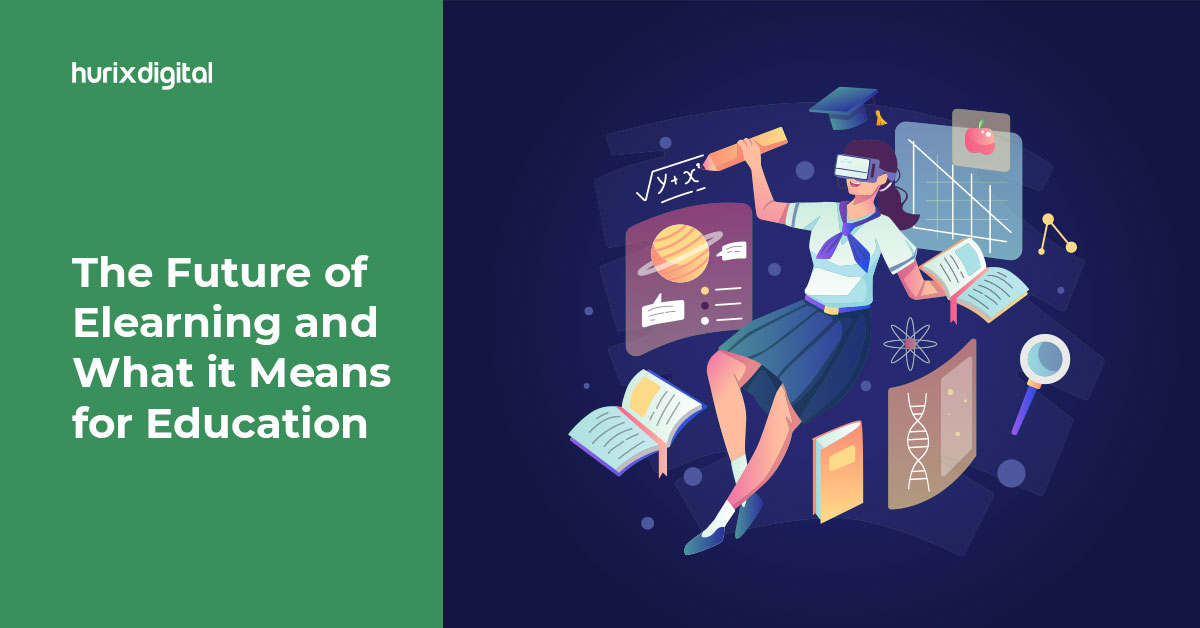
The Future of Elearning and What it Means for Education
Summary
This article discusses the future of eLearning, highlighting emerging trends and technologies that are set to transform education, making learning more personalized, accessible, and effective.
E-learning has become the new normal, revolutionizing the way we learn and paving the way for a more efficient and effective educational experience. From virtual classrooms to interactive learning materials, e-learning is bringing a whole new level of convenience and engagement to education.
It has opened up a world of opportunities, allowing students to learn at their own pace and in their own way. In this blog post, we’ll explore the future of e-learning in education by covering major trends reigning supreme in 2023.
1. Micro-learning
Microlearning allows course designers to break down complex topics into small, easy-to-digest chunks, making it easier for learners to absorb the information.
It also allows them to focus on the specific topics they need to learn without getting overwhelmed by the entire subject. With microlearning, students can quickly review and retain the information they need without having to spend hours studying.
Research confirms that microlearning boosts long-term retention and focus by up to 80%. Moreover, it enables students to learn on their own time, making it a great option for busy professionals. A win-win for all!
2. Gamification
Gamification is an engaging and interactive way to make learning fun and exciting for students. By introducing elements of gaming into the learning process, students are more engaged and motivated to complete their coursework.
Gamification also encourages learners to think critically and develop problem-solving skills as they have to figure out the best way to progress through the game. It provides students with a sense of accomplishment when they reach certain milestones.
Additionally, gamification can be used to personalize learning and make it more engrossing for students. No wonder 95% of learners favor a gamified work experience, according to a recent survey.
3. Adaptive Learning
Adaptive learning is carving the future of e-learning in education. It is a personalized learning approach to education that uses technology to adjust teaching strategies and content based on the individual student’s needs.
This type of learning helps students engage with the material in a way that is tailored to their individual strengths and weaknesses, allowing them to learn more effectively and efficiently.
With the help of adaptive learning, students are able to learn at their own pace and according to their individual learning styles.
Additionally, adaptive learning can provide teachers with important data about student progress and understanding, which can be used to adjust the learning materials to better meet the needs of the students.
4. M-Learning
M-learning, or mobile learning, is an exciting new way to learn that is becoming increasingly popular. It allows learners to access educational materials on mobile devices, such as smartphones and tablets, and offers an unprecedented level of convenience and flexibility.
With m-learning, learners can access educational content at any time and from any location, making it the perfect solution for busy people who need to learn on their own schedule.
Additionally, m-learning offers a way to distribute customized content tailored to individual needs, making it even easier to find the right material and quickly understand it.
With the added benefit of being able to contact other students and access help from teachers and other experts, m-learning is becoming increasingly mainstream. Therefore, it will continue to dominate the landscape of e-learning in education.
5. Video-Based Learning
This is a type of online education that utilizes video content to teach students. Not only is video-based learning more compelling and interactive than traditional methods of learning, but it also has several other benefits.
With video-based learning, students can pause and rewind content, making it easier to absorb information and review concepts. This style of learning also allows for easier collaboration, as students can replay parts of lectures and videos to discuss topics with their peers.
Through this type of e-learning in education, students can watch lectures, tutorials, and demonstrations that can also be adapted to their unique learning needs. Undoubtedly, videos will continue to transform education in the future.
6. VR and AR in E-learning
With the rise of virtual reality (VR) and augmented reality (AR) technology, e-learning in education has seen a dramatic shift in how students learn and interact with their environment.
Through the use of VR and AR, students can explore virtual worlds and engage with their e-learning material in a more immersive and multisensory way. For example, they can explore a 3D representation of a historical event or learn a new language by engaging in a virtual environment.
They can explore a virtual 3D model of a human heart to gain a better understanding of its anatomy. The possibilities are endless.
It should come as no surprise that the use of VR in the global education market is anticipated to surpass USD 1.3 billion by 2026. In fact, VR training can be 52% more economical compared to classrooms when there is a large number of learners involved (3000+).
7. Artificial Intelligence (AI)
AI-powered solutions are helping personalize the learning experience, providing students with tailored content, guidance, and feedback that can be adjusted in real-time.
AI systems can also be used to automate administrative tasks, such as tracking student progress and providing customized reports and summaries. Additionally, they can be used to identify patterns in student data that can help administrators and teachers identify trends and areas for improvement.
Artificial intelligence can also be used to provide automated feedback to students based on their performance, which can help them understand areas where they need to focus more effort and resources.
Conclusion
The future of e-learning in education is an exciting prospect for educators and learners alike. We can expect to see more interactive learning experiences, more personalized learning, and more options for remote learning in the future.
As technology continues to advance, e-learning will become even more accessible and user-friendly. We can also anticipate more collaboration between educators and learners, facilitating collaboration, communication, and feedback.
E-learning will continue to become part of the mainstream education system, offering more opportunities for customization and allowing learners to learn in their own way.
Explore Hurix to avail our various e-learning and training solutions, including game-based learning, scenario-based learning, and more.

Performance, Results, Growth, and Life-Long Learning define my professional life. I am passionate about making workplace learning planful, purposeful, and impactful. I take pride in partnering with clients and bringing them the best in learning design and creating solutions that address business challenges.




